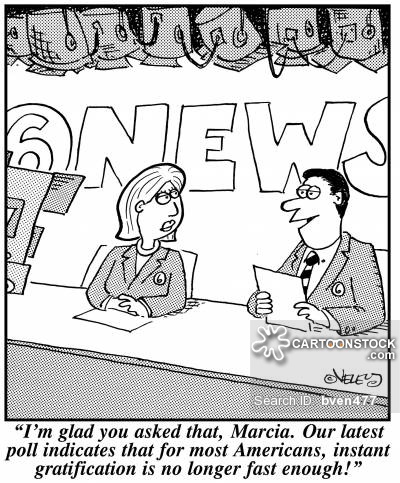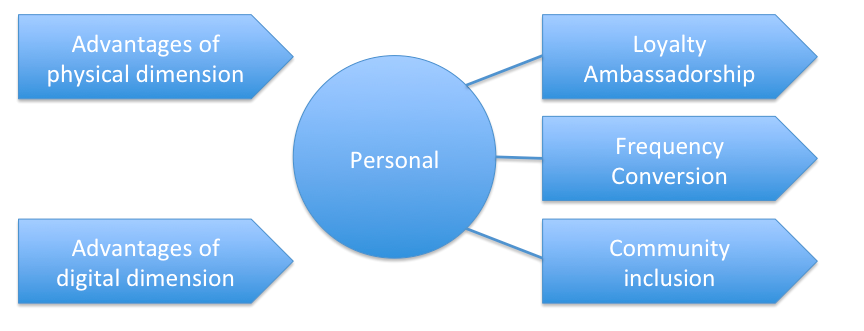TL:DR: Being personal in business is great but being personal in the digital dimension is hard. And living up to the standards of digital in the physical world is even harder. Understanding what constitutes a personal relationship and using both the physical and the digital dimension to do what they are best at is key to being successful.
A real personal connection is the future of digital business
Things change. As digitalization spread there are a number of things abut how you execute your business that are challenged and questioned. More precisely I’m thinking about the interaction between physical and digital and its linked outcome, personalization.
Traditionally, physical footprint was more or less the only way to expand a retail business. You’d place as many of your stores (or branches) as you possibly could, in places where people were, and where you could find a space at a reasonable price.
In banking (this blog is mostly about banking if you didn’t know already) , when a physical meeting take place and when a connection is made, they have a high conversion rate, to speak digital business-lingo. The volumes are low and the cost/unit is high, but efficiency is great. But most of all it is an extremely important asset to drive trust and build relationships. Your physical space is a very real expression of your business and a hub for building a community around that.
As the digital dimension emerge, it brings new advantages, and specifically ones that aren’t hindered by the limitations of a physical and geographical space. The digital dimension provides (at least in theory) a virtually borderless and boundless marketplace with an extreme leverage that comes with volume which combined with market transparency drives margins down.
A very significant development in the digital growth that has been taken place the last 10-20 years, is that relationships now can be entirely digital. They can be initiated, experienced and developed on digital platforms. Maybe we like to meet, but we don’t have to. We can still get the rush of that personal connection.
Digital has changed analogue
In the physical dimension personal relations is a natural consequence, and being personal and local is a result of having an extensive footprint. Handling customer expectations back then was easier. The expectations where altered purely by what was going on in that space and were fairly easy to gauge and adapt to.
Digital excels on speed, computational power and intelligence and has nurtured our impatience with more or less everything in the real world and has created generations of instant gratification junkies.
As it happens, digital experiences have messed up our expectations of real-life events. Our attention span, and our ability to postpone an urge are inhibited due to years of constant instant gratification. Standing in line is an almost unthinkable act of self-depreciation.
Basically we have become inhumane humans. We crave digital efficiency to be satisfied.

And, the very fact that the complexity of things you can execute online is greater than what anyone person can do means that in many cases you’d prefer digital to personal.
Please, can you suggest a portfolio of long term low risk funds with a good diversification and at a cost lower than 0,5% – actually, can I have 5 different suggestions please? I have about 3-5 seconds to spare…
Except for a number of specific occasions. These are the situations containing anomalies and things that are out of the ordinary. Typically decision with high impact on you distant future (like pension) or decision with high impact on your immediate situation, and when the stakes and risks in a transaction are high. This is where the trust and personal relationship comes in. And this is where a business can extract greater value per relationship.
A personal connection is the ultimate goal
I believe that success in the long term is defined by qualitative parameters, like higher customer satisfaction, a higher sense of loyalty, ambassadorship, and trust, that all leads to a higher conversion rate, higher average sales volume and lower churn.
The personal connection is an important factor is an important way of delivering that, and we know that the physical dimension is historically apt to foster personal relationships – but people in general can’t be bothered with the shortcomings of the analogue and physical.
If you are a rationalistic businessperson you’d compare efficiency (efficiency for example being the cost of said channel/revenue of said channel) of these different dimension and you can reduce this to a simple matter of which channel is preferable.
But if you’re driven by a belief that personal relationships (and the data that surrounds them) are the most valuable asset now and in a digital future, you’d come to the conclusion that a blend of these dimensions, where both in aggregate delivers value to the customer.
Here’s how I’m thinking.
An assumption is that if you optimize both of these dimensions – the physical and the digital – to enrich the personal relationships with the specific traits of that dimension, you have a model to base your decisions upon. It could look something like this:
For each one of these dimensions you have to evaluate from the standpoint of value delivered versus how efficiently it’s done.
To stir up the perfect blend of digital and personal you have to understand what makes personal relationships work.
There are basically two important ingredients of a personal relationship
- Relevance
- History
- Connection
Relevance is the first and probably most crucial check box of a personal connection. Relevance means you have an insight as to what your counterpart needs and wishes for and that your suggestions are a reasonable fit on the receiver end. The better the fit, the higher the conversion rate – so this is important to get right. This is where AI will be a huge contributor in a few years time.
And then there’s history – to be personal you need to know what led up to the current situation and ideally have a sense of you common future. As a customer this has a lot to do with convenience. There’s no need to go through your backlog for every single point of contact. It nurtures your ego and plays into your need for convenience.
A relationship that stands on a common ground creates an intangible value. The common ground is often derived from being physically available and a part of a community.
It’s basically Robert Cialdinis seventh principle of influence – unity, which is about shared identities, and how we are more influenced by people we identify ourselves with. If you put in an effort to be a part of the community, like engaging in clubs, organisations and local traditions – you become an integral and important part of the shared and common values in that geographical area. Being a local citizen and being a part of the same community you are serving, is in my thinking a very important driver of personal relationships – that will serve your business purposes in the long term.
The outcome – personal and digital connections
You have to be more knowledgeable about what creates a personal connection in the digital dimension, since it’s not a natively built in in this space. The tricky part is to get the two dimensions to provide the value they are best suited to provide. And then you have to get these parts working together, creating a value cycle where everyone instantly know what goes where and where things are best executed.
If you calibrate and use these two dimensions in concert they can provide a customer experience that blends the best of the two worlds. The result will be a business that derives value from being digitally apt, and at the same time reaping the benefits of personal connections by expanding the drivers of business like satisfaction, trust, loyalty and ambassadorship.
